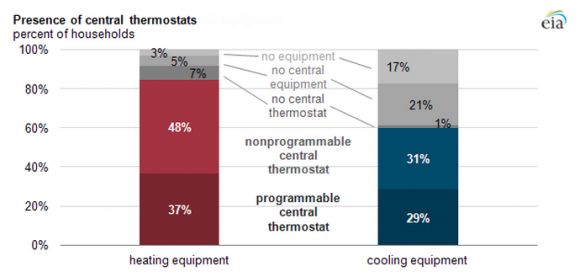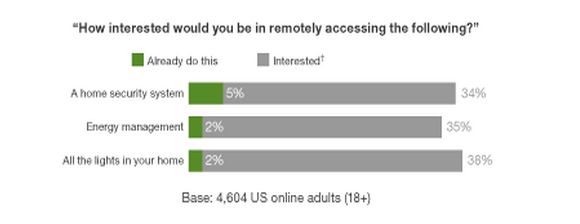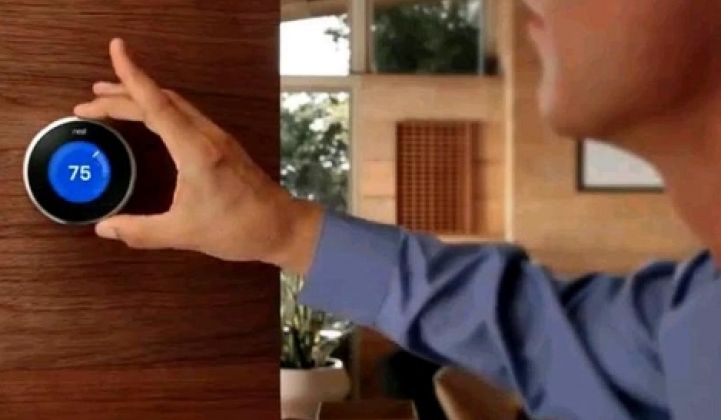Programmable thermostats have been on the market for a long time. In fact, the technology's roots go all the way back to 1885, when Albert Butz invented the "damper flapper," a regulated pulley system that automatically controlled air flow to a coal furnace.
Over the last 130 years, smart thermostats have evolved into sophisticated data-gathering devices that can connect to other systems in a home and be controlled remotely via a mobile phone.
But even with such a long history and new excitement about the emergence of the connected home, the residential smart thermostat market is still relatively small.
The Energy Information Administration recently released figures on the penetration of programmable thermostats in American homes. It found that only 37 percent of residences host programmable devices for central heating, and 29 percent have programmable devices for central cooling. The takeaway: the addressable thermostat market -- even for devices with minimal levels of intelligence and controllability -- is still massive.

If we break down the data by looking at more sophisticated offerings, the market looks even bigger.
In its latest survey of consumers, Forrester Research found that only 2 percent of U.S. online adults have energy management systems (which usually feature some kind of intelligent thermostat). In addition, only 2 percent of online adults have a system to program or remotely control lighting.
But when asked whether they would consider investing in such systems, more than a third said they were interested. If we apply Forrester's findings to the rest of the country, that means tens of millions of homeowners with no energy "smarts" in the home are potentially in the market to buy.
"Cutting-edge devices like the smart thermostat might be low on the adoption curve today, but consumer appetite is evident," wrote Forrester's Anjali Lai.

These figures show that companies hawking smart energy equipment have a substantial addressable residential market. But it also shows how far we need to go to connect them together.
The "connected home" is one of those terms which, much like "smart grid," describes a vague, far-off goal with a lot of different interpretations.
The term itself is helpful for framing a vision for the future, but it doesn't precisely describe the way technology is being integrated into the home itself.
When is a home truly connected? According to Forrester Research's Consumer Technographics data, more than 60 percent of U.S. online adults have a web-connected television in their home. Another quarter of American adults have an internet-enabled videogame or entertainment console.
Do those qualify? Or will those devices need to be truly integrated with every other appliance in order to meet the definition of a connected home?
The same goes for home energy management systems. Many companies are attempting to create an all-encompassing platform for managing appliances and HVAC systems in the home. A handful of companies are making steady progress, particularly through integrating existing security or telecom offerings with home energy apps. But the immediate drivers for HEMS are still control switches in air conditioners and, increasingly, programmable thermostats that may help utilities beef up their residential demand response programs.
While connected home platforms that integrate energy, security and entertainment systems together are certainly on the horizon, a lot of the near-term action may be within individual technology silos.
Nest has been particularly effective at milking this trend, choosing to focus on making individual products attractive to consumers, rather than just taking a broad-based approach to the connected home. (Google, which recently acquired Nest for $3.2 billion, made the early mistake of building a broad platform for monitoring energy use that consumers didn't use.)
Although smart thermostats have been integrated into a surprisingly low number of American households, they are clearly an important enabler for building the connected home. Google realizes this, as indicated by its acquisition of Nest last month. And with such a large addressable market emerging in the U.S., there's a sizeable share for other companies to grab as well.



